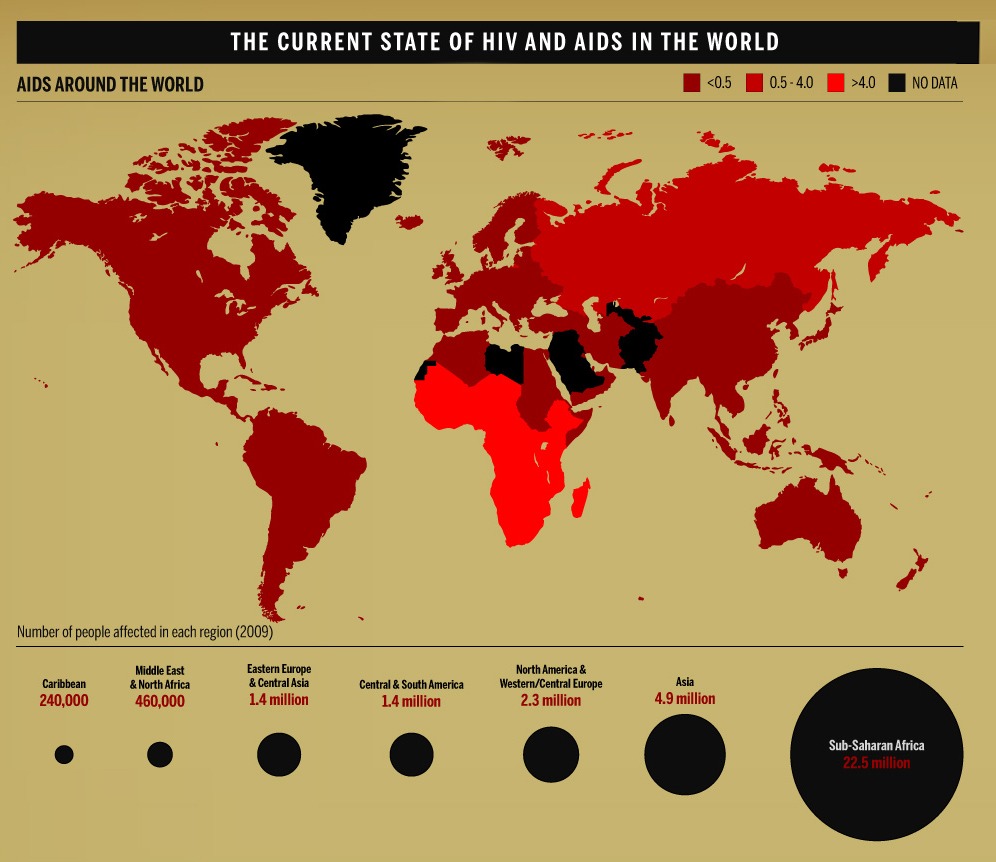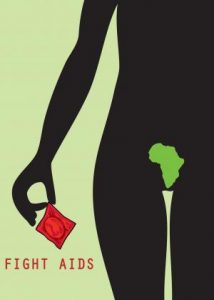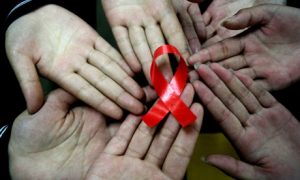
Today marks the 25th anniversary of World AIDS Day. This year’s theme ” Getting to Zero ” continues to raise awareness about the disease’s nature, the availability of treatment and hopefully getting to Zero new HIV infections. Zero discrimination. Zero AIDS-related deaths.
In 2012, there was an estimated 36 million people living with HIV worldwide, the MENA region being the least affected with around 460,000 persons according to UNICEF, but sadly the numbers are increasing due to the misconceptions, social stigma and lack of awareness about the disease, methods of its prevention and treatment in spite of awareness efforts.
HIV stands for Human (affects only human) Immunodeficiency (weakens the immune system by destroying important protective cells) Virus (a micro-organism that only reproduces by taking over a host cell). It is believed that the virus has been around since as early as the 1800s, but it wasn’t until 1981 when the first case reports and epidemic threat of the disease was published.
 AIDS stands for Acquired (not something you’re born with) Immuno (affecting the immune system) Deficiency (not working) Syndrome (a collection of signs and symptoms rather than a single disease). It is the late stage of HIV infection where the immune system fails to defend your body against infections or the rise of tumors, which are the two most common causes of death in patients.
AIDS stands for Acquired (not something you’re born with) Immuno (affecting the immune system) Deficiency (not working) Syndrome (a collection of signs and symptoms rather than a single disease). It is the late stage of HIV infection where the immune system fails to defend your body against infections or the rise of tumors, which are the two most common causes of death in patients.
HIV is transmitted through the transmission of bodily fluids: Blood, Semen, Breast milk, Vaginal fluids and Anal mucous. So, it is transmitted via unprotected sexual contact, pregnancy, child birth and breast feeding, drug injections, blood transfusion and organ transplant, in addition to health care professionals who are at risk of occupational exposure.
Prevention is key in limiting the increasing numbers of the transmission of the disease. On top of the list comes the use of male and female condoms that have more than 85% protection against HIV infection and other sexually transmitted illnesses (STIs). Also, screening tests for HIV and other STIs help in containing the diseases and providing treatment at early stages and prevents further transmission of the disease, especially in cases of blood transfusions and other medical procedures.
Other preventative measures include safe syringe use for health professionals and injection drugs users and the elimination of mother to child transmission, which is possible by the aid of Antiretroviral Therapy (ART) use and safety measures during child birth and lactation.
During the past few years, ART has been developing with the introduction of new drugs that control viral replication within the body, but does not kill the virus. However, they give the immune system a chance to recover and fight back so that people living with HIV can lead a healthy productive life.
 But ART consists of a combination of three or more drugs taken for a lifetime, which is very costly. Global measures and funds are being raised to deliver treatment to those in most need, especially in low- and middle-income sub-Saharan countries, which are the most affected. More than 9.7 million people living with HIV in low- and middle-income countries were receiving ART by the end of 2012. Of those, about 640 000 were children.
But ART consists of a combination of three or more drugs taken for a lifetime, which is very costly. Global measures and funds are being raised to deliver treatment to those in most need, especially in low- and middle-income sub-Saharan countries, which are the most affected. More than 9.7 million people living with HIV in low- and middle-income countries were receiving ART by the end of 2012. Of those, about 640 000 were children.
The world community still has a long way to go, but as UNAIDS executive director Michel Sidibé said in the Independent today: “We are winning against this epidemic, we are seeing a decline in new infections, an increase in people treated… we have broken the conspiracy of silence.”
And that is just the beginning. So wear your red ribbons today to show your global solidarity.
WE SAID THIS: Find out more about HIV/AIDS here.


